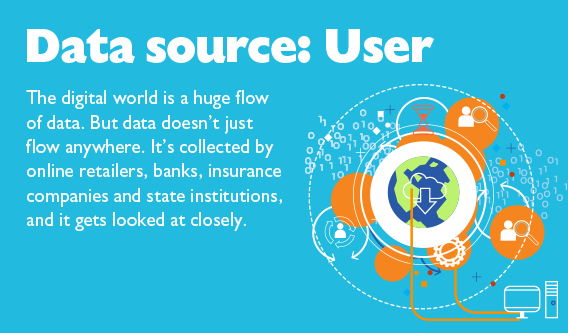
The information that people deliberately share on the Internet or while using apps is usually only a fraction of the data that is actually produced and processed. That’s because the real “data flow” is to a large extent hidden from view. The following example of posting a photo to share will illuminate this.
A digital image that is photographed with a smartphone and posted on a social networking site provides a set of information:
So, whoever posts a photo is revealing a lot – much more than is apparent at first glance. And since much of the data is stored, not only the visible data but the invisible stuff too, there are traces left all over the Internet.
Services are never free – the digital world is no exception. Many online services appear free at first glance, because you don’t have to pay any money for them. Usually, one can only use them by exchanging a particularly valuable “currency”: our personal data.
Personal data provides information about interests, networks, habits and behavioral patterns of users. This information is of great interest for many different stakeholders – operators of online services, advertisers or authorities – and is sometimes even the business model basis for suppliers of digital content and applications. Users often unknowingly grant their consent for the collection, use and transfer of such personal data through the use of apps or online services.
 In the "Data Privacy" video, you can find out how users can retain control over their data on the internet.
Data Privacy: Interactive learning module
In the "Data Privacy" video, you can find out how users can retain control over their data on the internet.
Data Privacy: Interactive learning module
 The infographic “Data Source: User” offers an easily understandable overview of where data in the digital world comes from and how it’s collected.
Infographic: Data source
The infographic “Data Source: User” offers an easily understandable overview of where data in the digital world comes from and how it’s collected.
Infographic: Data source
